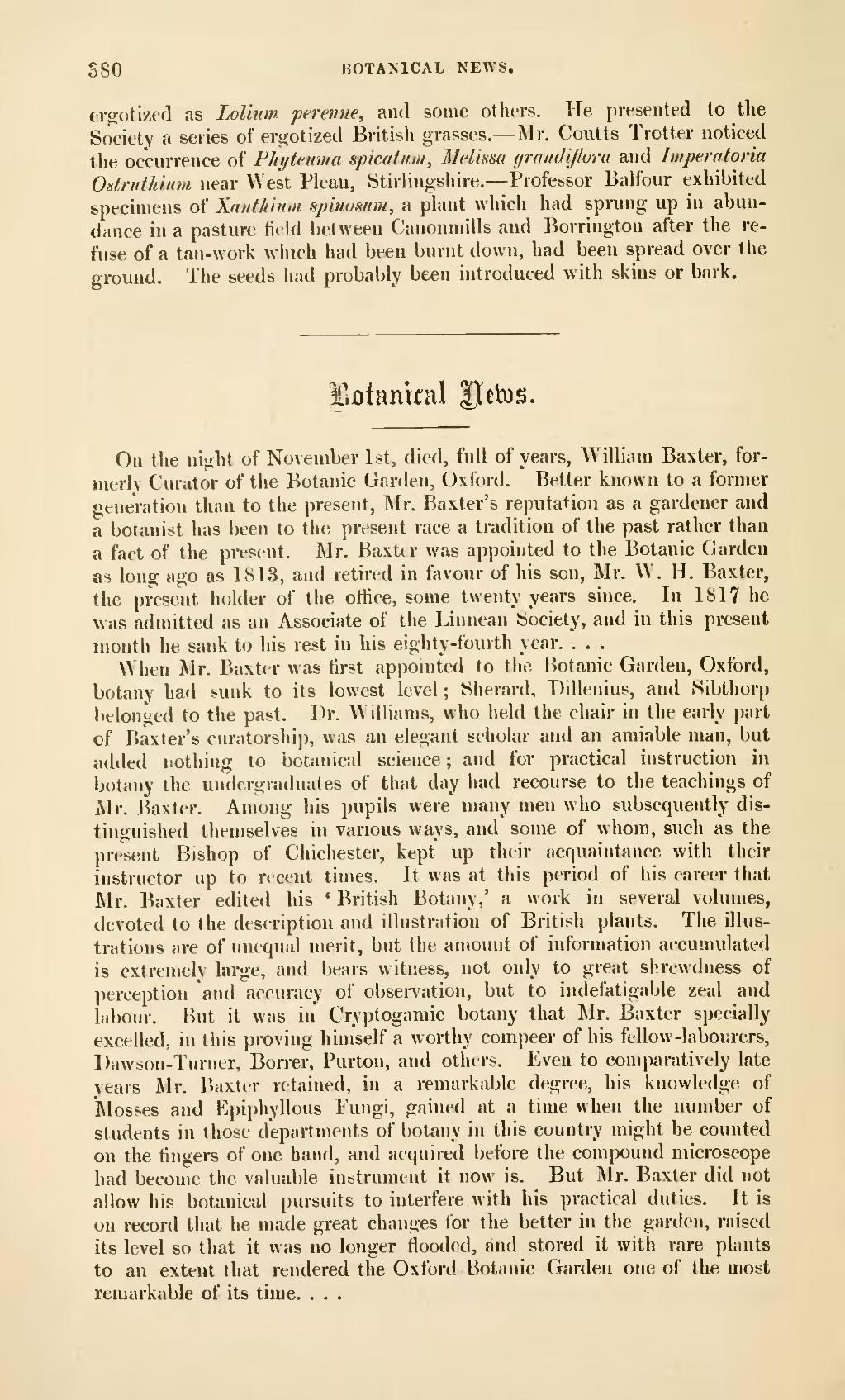380 BOTANICAL NEWS.
ero;otize(l as LoUnm pereiuie, and some others, lie presented to the Society a series of ergotized British grasses. — Mr. Coutts Trotter noticed the occurrence of Phyteuma spicatum, Melissa (jraiidipora and Imperatoria Ostriithmm near West Pleau, Stirlingshire.— Professor Balfour exhibited specimens of Xanthinm. sjnnusiim, a plant which had sprung up in abuu- dfince ilia pasture field between Canonmills and Borrington after the re- fuse of a tan-work winch had been burnt down, had been spread over the ground. The seeds had probably been introduced with skins or bark.
��f.flfaitkal Uctos.
��On the night of November 1st, died, full of years, William Baxter, for- merly Curator of the Botanic Garden, Oxford. Better known to a former generation than to the present, Mr. Baxter's reputation as a gardener and a botanist has been to the present race a tradition of the past rather than a fact of the present. Mr. Baxter was appointed to the Botanic Garden as long ago as 1813, and retired in favour of his son, Mr. W. H. Baxter, the present holder of the office, some twenty years since. In 1817 he was admitted as an Associate of the Linnean Society, and in this present niontli he sank to his rest in his eighty-fourth year. . . .
W' lien Mr. Baxter was first appointed to the Botanic Garden, Oxford, botany had sunk to its lowest level ; Sherard, Dillenius, and Sibthorp belonged to the past. Dr. Williams, who held the chair in the early part of Baxter's curatorship, was an elegant scholar and an amiable man, but added nothing to botanical science ; and for practical instruction in botany the undergraduates of that day had recourse to the teachings of Mr. Baxter. Among his pupils were many men who subsequently dis- tinguished themselves in various ways, and some of whom, such as the present Bishop of Chichester, kept up their acquaintance with their instructor up to recent times. It was at this period of his career that Mr. Baxter edited his ' British Botany,' a work in several volumes, devoted to the description and illustration of British plants. The illus- trations are of unequal merit, but the amount of information accumulated is extremely large, and bears witness, not only to great shrewdness of perception and accuracy of observation, but to indefatigable zeal and labour. But it was in Cryptogamic botany that Mr. Baxter specially excelled, in this proving himself a worthy comjieer of his fellow-labourers, Dawson-Turner, Borrer, Burton, and others. Even to comparatively late years Mr. Baxter retained, in a remarkable degree, his knowledge of Mosses and Kpiphyllous Fungi, gained at a time when the number of students in those departments of botany in this country might be counted on the fingers of one band, and acquired before the compound microscope had become the valuable instrument it now is. But Mr. Baxter did not allow his botanical pursuits to interfere with his practical duties. It is on record that he made great changes for the better in the garden, raised its level so that it was no longer Hooded, and stored it with rare plants to an extent that rendered the Oxford Botanic Garden one of the most remarkable of its time. . . .
�� �
